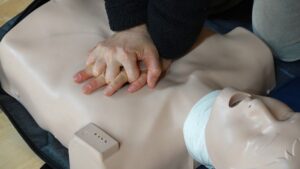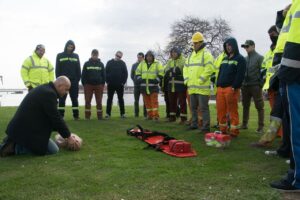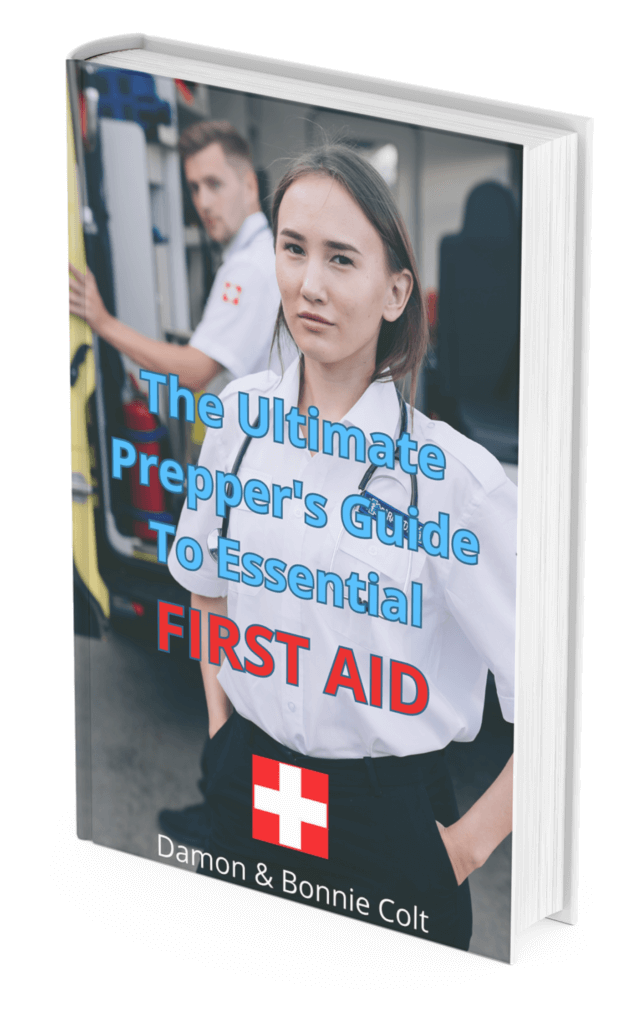Preparing for Survival: Your Comprehensive First Aid Guide
When it comes to survival preparations, many tend to overlook a critical aspect: first aid. While food, water, and shelter are the primary focus, neglecting medical supplies could prove disastrous in a crisis. Imagine a situation where you or a loved one sustains an injury—without the right supplies, even a minor wound could escalate into a catastrophe.
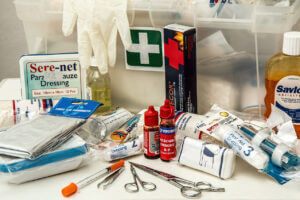
Your everyday medicine cabinet might contain some basics like aspirin, Band-Aids, or antacids. However, in a survival scenario, you might require more than what’s typically stashed away. You could need supplies to fashion a splint for a sprain or a tourniquet for a serious injury. If anyone in your family relies on prescription medication, you’ll need backup supplies or alternative holistic remedies should obtaining prescriptions become impossible.
Moreover, it’s crucial to consider how you store your medical supplies. Water damage, for instance, could ruin bandages, gauze, or tape. Picture a scenario where medical help, pharmacies, or hospitals are inaccessible—you’ll need to prepare based on your ability to self-sustain.
Starting with a Basic First Aid Kit
If you’re new to survival prepping, you can begin your journey with pre-made first aid kits. These kits serve as excellent starting points for beginners and are incredibly convenient. However, it’s important to note that these kits are typically designed for everyday injuries at home or while camping—not necessarily for full-blown survival situations where professional medical help may be unavailable.
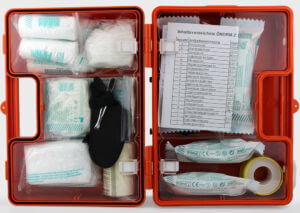
In a starter first aid kit, you’ll find various options, ranging from basic ones for minor cuts and scrapes to larger ones that include additional supplies. A basic kit typically includes antiseptic towelettes, alcohol prep pads, a cold compress, antibiotic ointment, an assortment of bandages and gauze pads, gloves, splints, and a small first aid guide.
You can also find first aid kits with more extensive supplies, such as those containing over 400 pieces or kits with waterproof cases. Some even come in miniature versions with survival foil blankets for emergencies when you might find yourself bugging out and in need of essential supplies overnight.
Supplementing Your Kit
When you acquire a first aid kit, start by making a list of its contents, specifying sizes and quantities. Then, create a second list of additional items you want to include in your survival supplies. If your kit lacks aspirin or medical tape, jot down these missing items for future purchase. If you already have a kit with a few bandages, you don’t necessarily need to buy a new one; instead, focus on purchasing the specific items you need more of, like gauze or medical tape.
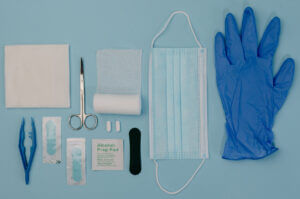
Consider any other tools that might be crucial for survival first aid. This could include items like a tourniquet or a skin stapler, which might be necessary for addressing severe injuries.
First aid isn’t just about addressing injuries; it also involves tending to ongoing medical needs. During a survival situation, you may not have access to a doctor or prescriptions. Thus, having supplies like Vitamin C supplements and multivitamins to stave off illnesses becomes essential. Think about potential medical issues that could quickly escalate—for instance, an allergic reaction without antihistamines on hand or diarrhea leading to severe dehydration, necessitating medication.
Some people prefer using liquid bandages over traditional gauze-type bandages because they’re more durable and convenient. Interestingly, they also work well on pets, offering a versatile addition to your supplies.
Personalizing First Aid for Your Family
In addition to ensuring you have a stock of basic supplies, consider personalizing your first aid kit to match the unique needs of each family member. Even seemingly small items, like having antacids on hand for a family member with frequent heartburn, can be significant. While you can keep these items in the main supplies, assembling individualized kits for each person—perhaps packed in their bug-out bag—can add an extra layer of preparedness.
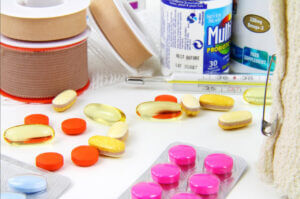
When personalizing your first aid supplies, take into account the specific medical needs of each family member, whether they’re diabetic, elderly, children, or have other unique requirements. This may necessitate investing in a variety of first aid products. Pediatric medications or electrolytes for rehydration, for instance, may differ from those suitable for adults. Don’t forget to think about your pets and what first aid items they might need.
Safe Storage and Maintenance
Organizing and maintaining your supplies are paramount to ensure they’re safe for use. Safety entails protecting items from contamination, such as ensuring your first aid kit doesn’t end up floating in stagnant water during a flood due to improper sealing or storage.
Proper labeling is crucial. Ensure that every item is clearly marked, with readable dosage and expiration information. Keep an inventory of what you have on hand, and regularly rotate supplies like ibuprofen or anything with an expiration date to avoid relying on old medications. Consider printing and laminating essential medical records and health information, keeping them readily available with your first aid supplies.
Planning for the Long-Term
In a prolonged survival event, you might eventually run out of supplies. It’s wise to plan for this possibility, even if it never happens. Herbal remedies can become invaluable, assisting with a wide range of issues, from nausea to headaches. 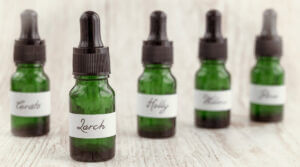
Dental health is another aspect to consider. Dental issues can be excruciatingly painful, and emergency dental pain kits are available to provide relief until proper dental care is accessible.
Don’t just focus on physical health—mental health is equally vital. Having mood-boosting and stress-relief items on hand can make a significant difference.
Remember, first aid survival preparations aren’t just about acquiring products; you must also invest time in learning how to use them. It’s not just you who needs to be knowledgeable—involve your loved ones in the process. There may come a time when they are separated from the group or need to provide self-treatment, or you might be injured, and they need to care for you. Even young children can be taught basic first aid skills as soon as they’re ready.
Empowering Yourself with First Aid Skills: Sign Up for a Course
While having a well-stocked first aid kit is essential, it’s equally vital to equip yourself with the knowledge and skills to use those supplies effectively. Consider signing up for a First Aid Course to learn vital skills that can be invaluable in a survival situation.
These courses cover a wide range of topics, from basic wound care and CPR to dealing with fractures, burns, and other injuries. You’ll also learn how to assess a casualty’s condition, prioritize treatment, and provide immediate care until professional medical assistance becomes available.
By participating in a First Aid Course, you not only enhance your own preparedness but also contribute to the safety and well-being of your family and community. In a crisis, knowing how to administer proper first aid can make all the difference between life and death.
Survival preparations encompass more than just stockpiling food, water, and shelter. First aid readiness is a critical aspect that should not be overlooked. By starting with a basic first aid kit, supplementing it with personalized supplies, and ensuring safe storage and maintenance, you can be well-prepared to address medical needs during a crisis.
Planning for the long-term and considering both physical and mental health aspects further strengthens your readiness. Learning how to use your first aid supplies effectively, along with involving your family in the process, ensures everyone can contribute to their own well-being and the well-being of others when the need arises.
Incorporating herbal remedies and signing up for a First Aid Course are additional steps you can take to boost your survival preparedness. Remember, survival isn’t just about having the right supplies; it’s also about having the knowledge and skills to use them effectively. In times of crisis, this knowledge can be a lifesaver for you and those around you.
First Aid is one of the most important and vital skills you need to master to be prepared for any survival situation. Check out our 148-page comprehensive “Ultimate Prepper’s Guide to Essential FIRST AID” which gives you all the vital information and teaches you First Aid skills and strategies for most medical emergencies.
Check out our next article in the Survival Prepping 101 Series: Part 7 – Why You need to Plan Your Evacuation Measures
Missed Part 5? Check it out here: Prepping for a 72 Hour Emergency
